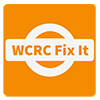Life insurance coverage offers financial support and stability for an employee’s family in the event of their passing. The plan includes Accidental Death and Dismemberment (AD&D) insurance, which provides additional benefits for a covered accidental death or dismemberment.
Regular full-time employees are automatically enrolled in Group Basic Life and AD&D insurance through The Standard at no cost to them. Employees also have the option to purchase additional life insurance coverage for themselves and their eligible dependents. Employees determine the amount of optional coverage they want and pay the full cost through payroll deductions.
Benefit Details
| Basic Life Coverage Amount | 1 times your annual salary to a maximum of $50,000 |
| Basic AD&D Coverage Amount | For covered accidentenal loss of life, your Basic AD&D coverage amount is equal to your Basic Life Coverage amount. For other covered losses, a percentage of this benefit will be payable. |
Optional Life Insurance
Coverage Options
Employees may request optional life insurance in the increments below up to the maximum amount. The amount over the guaranteed issue amount is subject to evidence of insurability (EOI) and is effective upon approval by The Standard. Employees may apply for coverage in the following amounts:
| Employee | $10,000 increments up to $500,000 | ||
| Spouse | $5,000 increments up to $350,000 | ||
| Dependent Children | $2,000 increments up to $10,000 | ||
Guaranteed Issue
Employees may enroll for a certain amount of insurance without answering health questions. Guaranteed issue amounts are as follows for coverage applied for within 31 days of employment or during a designed open enrollment period:
| Employee | Up to $150,000 |
| Spouse | Up to $50,000 |
Optional Life Rates (monthly)
| Age Band | Employee (per $1,000) |
Spouse (per $1,000) |
Child (per $1,000) 1 |
| <24 | 0.048 | 0.050 | 0.170 |
| 25-29 | 0.055 | 0.058 | |
| 30-34 | 0.067/ | 0.074 | |
| 35-39 | 0.090 | 0.100 | |
| 40-44 | 0.137 | 0.152 | |
| 45-49 | 0.219 | 0.238 | |
| 50-54 | 0.348 | 0.372 | |
| 55-59 | 0.535 | 0.570 | |
| 60-64 | 0.836 | 0.974 | |
| 65-69 | 1.451 | 1.666 | |
| 70-74 | 2.588 | 2.968 | |
| 75+ | 4.500 | 4.500 |
1 The premium paid for child coverage is based on the cost of coverage for one child, regardless of how many children you have.
Related Documents
Basic Life/AD&D Summary
Optional Life Summary
Related Forms
The Standard Enrollment Form
Beneficiary Designation
Medical History Statement
Conversion Packet (Retirement)
Portability Application
Related Policies
Flexible Spending Accounts
Medical FSA
A Medical FSA allows employees to use pre-tax dollars for eligible medical expenses not covered by medical and dental plans, such as copays, deductibles, orthodontia, vision care (including prescription eyeglasses and contact lenses), and prescription medications.
The annual contribution limit and the rollover limit for a Medical FSA are set by the IRS each year. Medical FSAs are pre-funded, giving employees access to their total annual election amount on the first day of participation. Employees can carry over a portion of unused FSA funds to the following plan year, up to the IRS-established rollover limit. Any unused funds above the rollover limit will be forfeited. Additionally, employees may make changes to their FSA elections if they experience an approved IRS-qualifying event.
Dependent Care FSA
Using FSA Funds
- Debit card transactions – Use the HealthEquity FSA debit card at the pharmacy or doctor’s office for instant payment.
- Reimbursement – If paying out-of-pocket for expenses submit a claim for reimbursement directly on the member portal and have funds electronically transferred to a personal bank account.
- Issue payment to provider – From the HealthEquity member portal, employees can issue payments to providers by creating a new claim, or by using existing integrated insurance claims if available.

Helpful Links
HealthEquity
Qualified Medical Expenses
Related Documents
FSA Summary Plan Description
FSA Member Guide
Member Portal Instructions
Related Forms
Orthodontia Reimbursement Form
FSA Reimbursement Form
DCRA Reimbursement Form
Health Care Savings Program
The Health Care Savings Program (HCSP) helps employees prepare for post-employment health care expenses through a tax-free medical savings account that they manage. This employer-sponsored program allows employees and their eligible dependents to cover medical costs after leaving employment with WCRC.
Employees hired after January 1, 2012, are automatically enrolled in the HCSP, which is administered by the Municipal Employees’ Retirement System (MERS). Currently, this program is only available to employees hired on or before January 1, 2012.
Contributions
Employees are required to contribute 2% of their gross wages and WCRC will match the 2%.
MERS Investments
The MERS HCSP is an investment account, meaning the employee takes an active role in determining their financial goals, making investments and monitoring their portfolio. The employee determines which investment menu works best for their needs. Employees can also make changes to their investments at any time by creating an account with myMERS.
Using HCSP Funds
Once an employee has met the vesting requirement of eight (8) years and has separated from employment with the WCRC they can begin using their MERS HCSP account.

Helpful Links
Related Documents
HCSP Plan Overview
HCSP Beneficiary Designation
HCSP Handbook
Understanding the MERS Investment Menu
Related Forms
Other
Below are some additional financial benefits offered to employees.
Tuition Reimbursement
WCRC is committed to the development of employees and the belief that education is a lifelong process which enhances work performance and increases career mobility with the organization, thereby helping employees provide better service to the public.
Non-Union employees can refer to the Tuition Reimbursement (HR-06) policy for additional information. Union employees should refer to their respective Collective Bargaining Agreement.
Protective Footwear Reimbursement
Employees that are required to wear protective footwear for their job will be entitled to a protective footwear reimbursement allowance of up to $200 each calendar year.
Non-Union employees can refer to the Protective Footwear Reimbursement Policy for additional information. Union employees should refer to their respective Collective Bargaining Agreement.
Tool Reimbursement
Employees that are required to provide their own tools as part of their job requirement (Shop Group Leader and Mechanics) will be entitled to a tool allowance of $1,000 per year.
Refer to the TPOAM Collective Bargaining Agreement for additional information.
Fitness Reimbursement
WCRC cares about the health of its employees. To help employees maintain a healthy lifestyle, WCRC provides a gym reimbursement program. Regular full-time employees will be reimbursed 50% up to a maximum of $450 per calendar year.
Refer to the Fitness Reimbursement policy for additional information.







